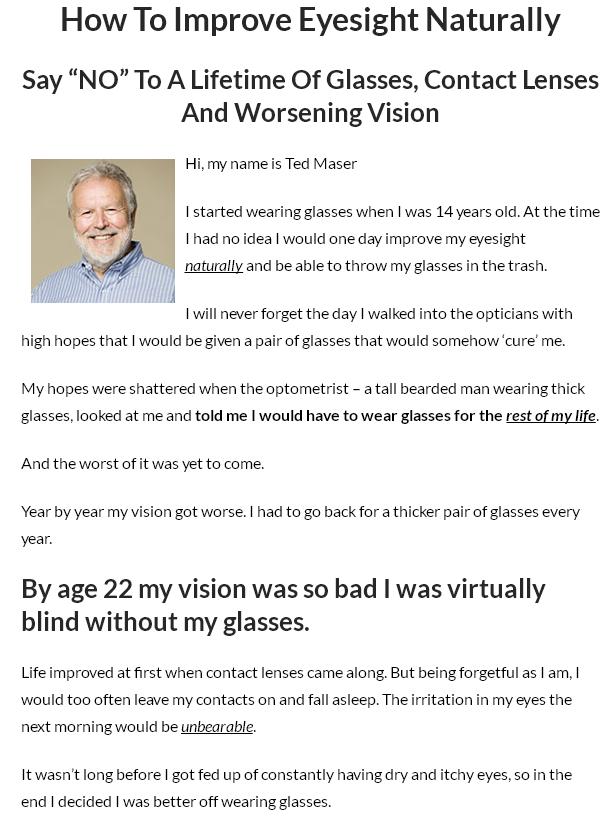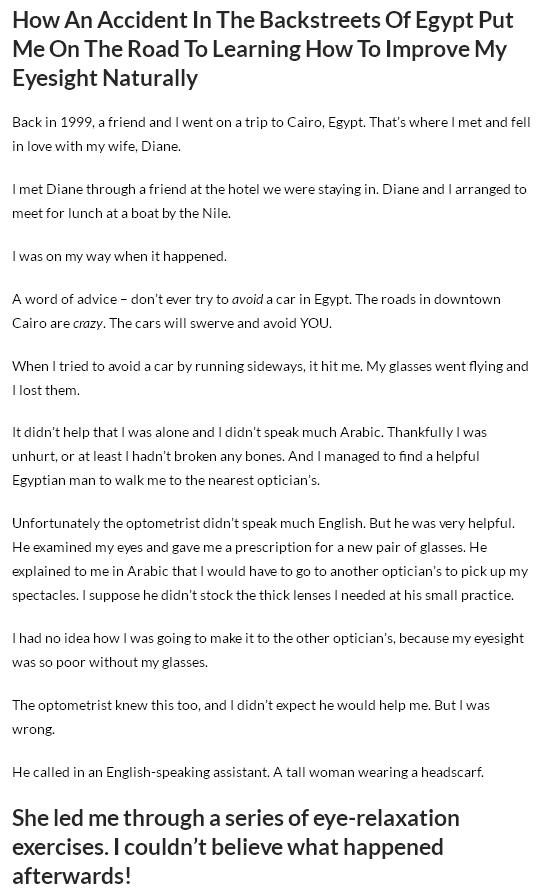 Since the mid-1990s, when refractive surgery became an affordable, low-risk option, millions of baby boomers have sought what was once thought impossible: to see well again without eyeglasses or contact lenses.
Since the mid-1990s, when refractive surgery became an affordable, low-risk option, millions of baby boomers have sought what was once thought impossible: to see well again without eyeglasses or contact lenses.
I was one of those millions, dependent on eyeglasses since age eight, and too uncomfortable wearing contact lenses. Since 1996 I have written from time to time about my quest for restored 20/20 vision, and the procedures I underwent to eliminate myopia (nearsightedness) and astigmatism.
Dr. Arthur Medina, my optometrist, long ago became a friend and more, and recently he introduced me to Dr. Gregory Parkhurst, the lead ophthalmologist and his partner in a national clinical trial exploring yet another step forward in the ever-evolving science of vision restoration and improvement.
Sometime in the next month, once my left eye is fully healed and I can write with confidence about the outcome, I will publish a story about the latest — my third — experience with refractive surgery. Today’s article is to share with readers an even more advanced procedure and technology that, alas, I did not qualify for as a patient.
Parkhurst and Medina are seeking 10 patients to complete a clinical trial by the end of August for a procedure that corrects near vision without degrading far vision. They want 10 people — ideally between the ages of 40 and 65 — whose distance vision is good, without correction, who require eyeglasses to read. The patients cannot have had any prior eye surgeries.
That, unfortunately, is not me. But it could be you, and if you are interested, simply go to www.lasik-sanantonio.com and click on the red “Tired of Reading Glasses?” icon and fill out the form. Or you can call the Nuvision offices, located at 9725 Datapoint Dr. in the former Rackspace headquarters, at 210-428-6788. Ten fortunate people who fit the above description will get a $5,000 procedure performed at no cost.
“We believe this is going to be next evolutionary step in vision surgery,” Parkhurst said. “Right now the (FDA-approved) technology is such that one eye can be corrected for distance focus, and one eye for near focus. We don’t have an approved technology to date that allows each eye to see near and far the way you did when you were 20 years old. This clinical trial is designed to allow people to see both far and near in the same eye, so it restores the near vision while not degrading the far vision. This surgery will get you out of reading glasses.”
Parkhurst and Nuvision are one of 12 sites around the country involved in Phase III clinical trials on behalf of Revision Optics, an Orange County, CA company specializing in what it calls “raindrop near vision inlay” surgery. Corneal inlays restore the proper curvature of the cornea and thus cure presbyopia, the condition brought on by age that causes the eye to lose its ability to focus on near objects. Once Parkhurst performs 10 more surgeries, the clinical trial phase will be completed and Revision Optics will await formal approval by the U.S. Food & Drug Administration.
There are a handful of other companies competing in the same space. One is Acufocus, another privately held company also located in Orange County. Parkhurst is not associated with Acufocus, but clearly there is a lot of competition for what is seen as a huge market as vision correction surgery becomes widely accepted and new products and procedures attract more patients. The various companies’ websites tend to show happy, active boomer couples — not unlike advertisements for prescription medicines that enhance or restore virility.
 Are there risks involved with the surgery? Yes, but the FDA site devoted to refractive surgery states most patients enjoy improved vision without serious side effects.
Are there risks involved with the surgery? Yes, but the FDA site devoted to refractive surgery states most patients enjoy improved vision without serious side effects.
“There has never been a case of blindness with this procedure,” Parkhurst said. “This is a clinical trial, so the first thing we do is bring patients in and describe all the risks and benefits. They want us to complete the trials by the end of August so we want to screen people within a week.”
I long ago concluded the benefits far outweighed the risks, and time has proven me right. I’ll have more to write about my own vision improvement quest in a few weeks.
Follow Robert Rivard on Twitter @rivardreport or on Facebook.
<!–
–>




